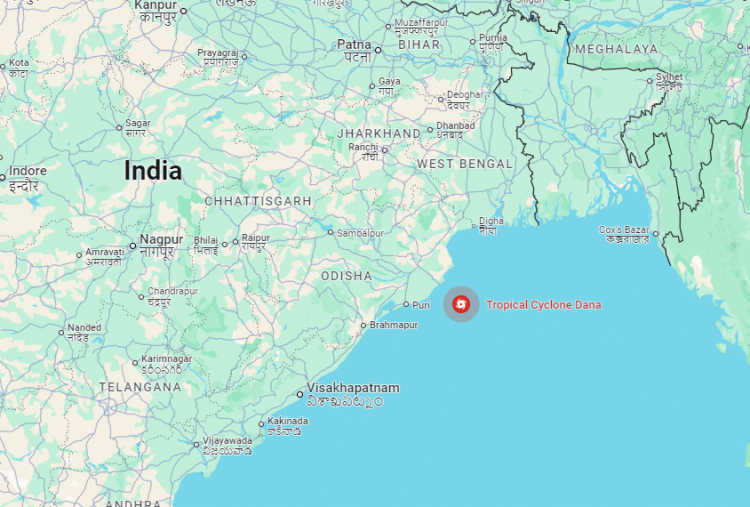India is bracing for the powerful Cyclone Dana, which is expected to make landfall on the country's eastern coast, specifically in the states of Odisha and West Bengal. With wind speeds predicted to reach 120 km/h (75 mph), authorities are undertaking a massive evacuation effort to safeguard citizens in vulnerable coastal areas. More than 1.5 million people are being relocated to storm shelters ahead of the cyclone's anticipated impact early Friday morning.
India's weather department has classified Dana as a "severe cyclonic storm," and it is expected to cross the coasts of Odisha and West Bengal between midnight Thursday and early Friday. The storm is currently moving across the Bay of Bengal at a speed of 12 km/h, and authorities are making last-minute efforts to mitigate the damage it may cause. Relief workers, emergency personnel, and rescue teams have been mobilized to assist with evacuations and provide aid in the storm's aftermath.
Chief Minister Mohan Charan Majhi of Odisha emphasized that the state is fully prepared for the storm, urging residents not to panic. Temporary relief camps stocked with food, water, and medical supplies have been established to accommodate those evacuated. West Bengal has similarly mobilized its disaster response teams and is relocating more than 300,000 people from its coastal regions. Both states are coordinating with the National Disaster Response Force to ensure a swift and efficient response to the cyclone.
Transportation services in the affected regions have been heavily impacted. Over 200 trains have been canceled, and airports in Bhubaneswar and Kolkata have suspended operations from Thursday evening through Friday morning. Fishermen have been warned to avoid venturing into the sea, and operations at Paradip port in Odisha, one of the state's largest, have been suspended. In addition to the evacuation efforts, schools in several districts have been closed as a precautionary measure.
Odisha and West Bengal are no strangers to severe cyclones. The region experiences powerful storms every year, and the government has ramped up efforts to prevent the kind of devastation witnessed in previous decades. In 1999, a super cyclone in Odisha claimed over 10,000 lives, a tragic event that continues to influence the state's disaster preparedness strategies. More recently, Cyclone Remal, which struck in May, killed 48 people in India and 17 in Bangladesh, further underscoring the need for efficient evacuation and disaster response.
According to government officials, Cyclone Dana is expected to cause widespread damage to homes, particularly thatch-roofed houses common in the coastal areas. Concerns have also been raised about potential flooding, with coastal waters expected to rise as much as two meters above normal tide levels. Local authorities are broadcasting warnings through loudspeakers, urging residents to seek shelter and comply with evacuation orders.
The Indian Navy and Coast Guard have also been put on high alert. Two naval ships, equipped with supplies, rescue personnel, and diving teams, have been positioned near the affected areas. The Coast Guard has deployed vessels and aircraft to respond to any emergencies at sea, particularly for fishermen who may have ignored safety warnings.
Meanwhile, neighboring Bangladesh is also bracing for the storm, though the worst of the cyclone is expected to hit India. Bangladeshi officials have indicated that they are closely monitoring the situation but have not yet issued evacuation orders. Nevertheless, disaster response teams in the country remain on standby to assist should the storm's path change.
Cyclones are a frequent occurrence in the northern Indian Ocean, and their intensity has been increasing due to the effects of climate change. Warmer ocean temperatures provide more energy to storms, causing stronger winds and heavier rainfall. While the region has developed more advanced forecasting capabilities and improved evacuation protocols, the storms still pose a significant threat to life and property.
Scientists have expressed concern that as global temperatures continue to rise, cyclones in this part of the world will become even more intense. "Climate change is making these storms stronger and more destructive," said Prashant Singh, a climate expert from India's Meteorological Department. Despite these challenges, India's improved disaster preparedness and effective evacuation plans have contributed to a reduction in cyclone-related fatalities in recent years.






